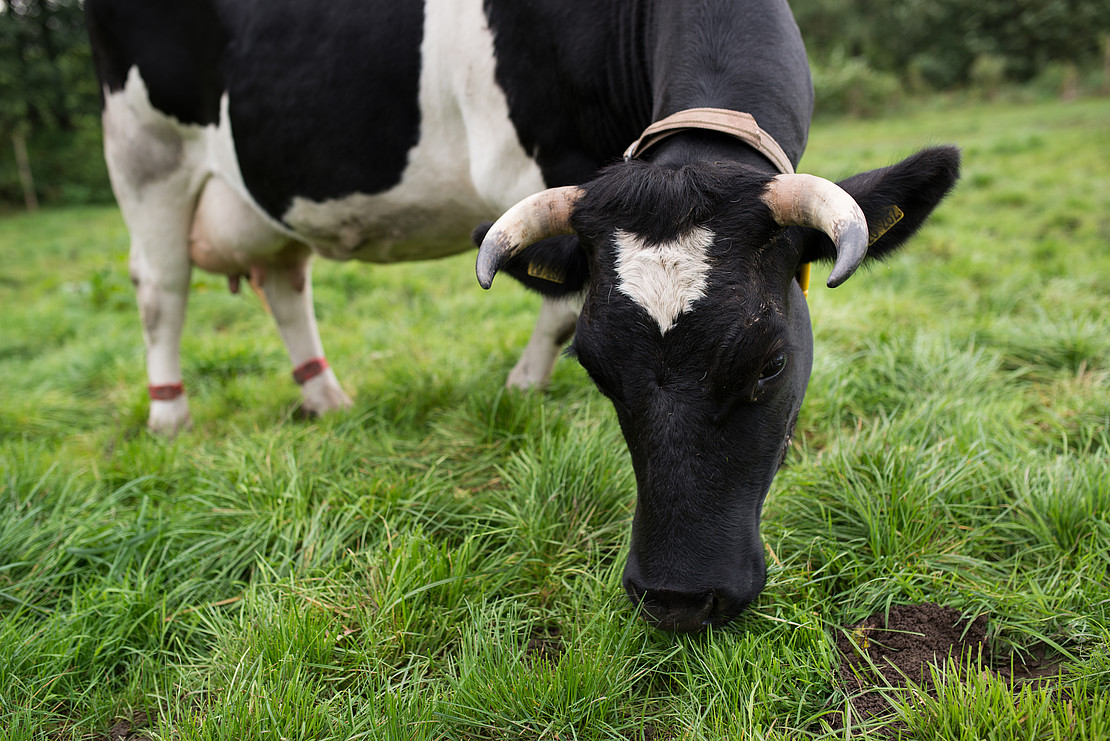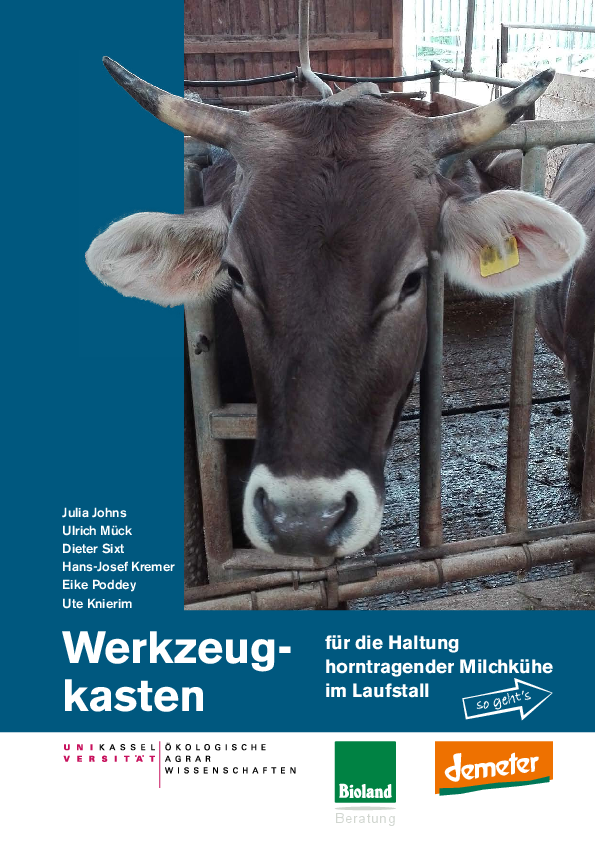This page contains automatically translated content.
Horn-bearing dairy cows in loose housing: guidelines for management presented
 Image: Paavo Blafield.
Image: Paavo Blafield.
The toolbox is based on the results of a four-year research project conducted by the University of Kassel together with organic and Demeter advisors and 39 practical farms.
The criterion for successful husbandry in the project was therefore above all a low number of horn-related skin changes in the animals. This is because if stalls and herd management are poorly adapted to the social needs of the animals, there will be more fights between the animals; this is reflected in skin changes in cows with horns, from skin scratches to injuries.
"Potential problems regarding increased competition and insufficient avoidance opportunities in the different loose housing areas are not fundamentally different for cows with or without horns," explains Prof. Dr. Ute Knierim, head of the Department of Farm Animal Ethology and Animal Husbandry. "But horn-bearing cows show much more clearly than their dehorned or hornless conspecifics where weak points exist. The toolbox is intended to contribute to a better understanding of the challenges of keeping and herd management of dairy cows in loose housing, especially horn-bearing cows, and to increase animal welfare on this basis. At the same time, we want to help preserve horn-bearing cattle breeds."
Unlike existing practice recommendations on the management of horn-bearing dairy cows, this toolbox does not specify rigid minimum requirements for husbandry and herd management. Instead, it explains in a practical way how the situation of one's own herd can be checked and assessed in a "self-check" based on the animal. If the result is unsatisfactory, possible improvements are shown. Dairy farms interested in keeping horned dairy cows can also use the toolbox to gain an overview of the criteria influencing barn construction and herd management independently of using the self-check.
The "Toolbox for the management of horn-bearing dairy cows in loose housing" will be available hot off the press at the 15th Scientific Conference on Organic Farming from March 5 to 8 at the Campus Center in Kassel and can be ordered free of charge at www.uni-kassel.de/go/werkzeugkasten and can be downloaded free of charge as a web version.
The project "Accompanying dairy herds during the conversion from dehorned to horned animals or from tethered to loose housing with the inclusion of model farms as a basis for qualified advice in dairy farming" ("Horns in loose housing") and the toolbox created in it were funded by the German Federal Ministry of Food and Agriculture on the basis of a resolution of the German Bundestag as part of the federal program Organic Farming and Other Forms of Sustainable Agriculture.
Contact:
Dr. Julia Johns,
University of Kassel
Department of Organic Agricultural Sciences
Department of Farm Animal Ethology and Husbandry
E-mail: johns[at]uni-kassel[dot]de
Prof. Dr. Ute Knierim
University of Kassel
Department of Organic Agricultural Sciences
Department of Livestock Ethology and Animal Husbandry
E-mail: uknierim[at]uni-kassel[dot]de